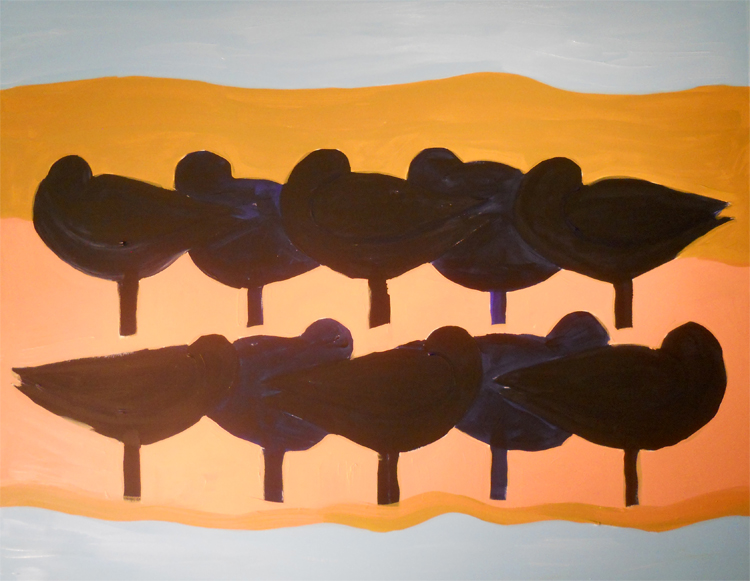“Each painting pushed me out of the known territory of my normal painting process,
as if I were talking about the birds in a new language with each composition.”
The Cultural Cartography paintings integrate an aspect of scientific knowledge with a particular style of art. These two elements constantly interact and influence one another within the paintings.
Stages of the painting Roosting at High Tide
Horizontal bands of multiple colors characterize many Aboriginal Dreamtime dot paintings. The layering of colored dots over a solid band creates endless possibilities in both abstract and figurative compositions. The different colors of the birds represent different species.
Stages of the painting Mudflats Foraging
Movement of a group of birds foraging was the visual goal of the painting. The patterns on top of a solid color change the underlying color in fascinating ways that can be hard to predict. Shortly after seeing a bark painting in an Australian museum in 1979, I walked along a beach in early morning. The layered tracks of insects, crustaceans, small birds, and mammals created a work of natural art that is still vivid in my memory.
Stages of the painting Embarking on a Full Moon
This composition was centered on the internal organs of the flying birds. Secondary themes were high tide and the full moon shown by the blue lines in the mangroves and the reflections in the water. Originally I had planned for all the birds to be the same color, but changed those over the mangroves on the right so that the “X-ray" view of the organs was more visible.
Stages of the painting Conflict
This narrative painting is focused on the sandpiper, a Red Knot in non-breeding plumage. The arc of the composition, from the sandpiper around and back, remains the same throughout the process. Colors and details changed as the narrative of conflicting needs developed. The lone biologist recording data is the only human looking at the sandpiper. All the others focus on "the beast."
©2019 Janet Essley All Rights Reserved

















